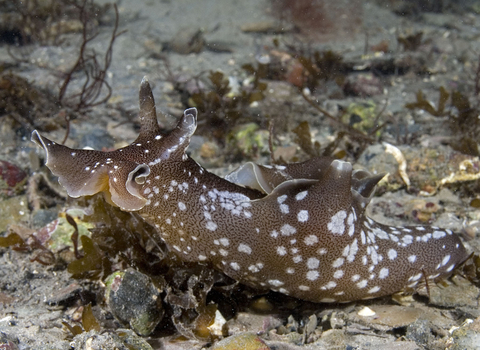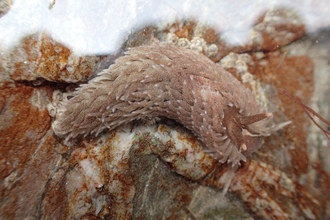
Sea hare ©Paul Naylor www.marinephoto.co.uk
Sea hare
The sea hare looks like a sea slug – but in fact has an internal shell. They can be up to 20cm long but are usually much shorter.
Scientific name
Aplysia punctataWhen to see
January to DecemberSpecies information
Category
Statistics
Length: 7-20cmConservation status
Common
About
The sea hare is a marine snail, found in shallow water and occasionally in rockpools on the low shore. They feed on seaweed and it is thought that this is what gives each sea hare its colour, e.g. green sea hares are eating green seaweeds like sea lettuce whilst the reddish-maroon sea hares are eating red seaweeds. Sea hares have an internal shell, which is around 4cm long and transparent. Like sea slugs, the sea hare is a hermaphrodite and they sometimes mate in chains, with an individual acting as both male and female. They lay eggs in long pink threads, which are deposited on seaweed and look a bit like pink spaghetti.How to identify
Sea hares reach 7-20cm in length. Normally a reddish-maroon colour, they can also be green or brown. Their upper head tentacles resemble hare's ears - giving them their common name.Distribution
Found on all UK coasts.Did you know?
Sea hares get their name from the upper pair of head tentacles that look like a hare's ears!How people can help
When rockpooling, be careful to leave everything as you found it - replace any rocks you turn over, put back any crabs or fish and ensure not to scrape anything off its rocky home.If you want to learn more about our rockpool life, Wildlife Trusts around the UK run rockpool safaris and offer Shoresearch training - teaching you to survey your local rocky shore. The data collected is then used to protect our coasts and seas through better management or through the designation of Marine Protected Areas.




